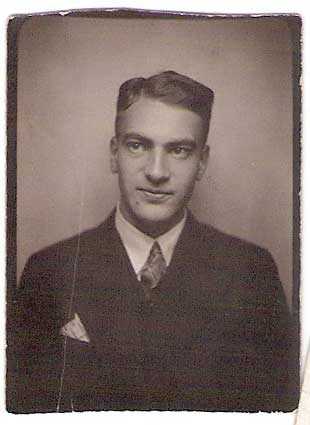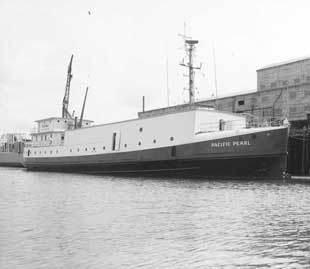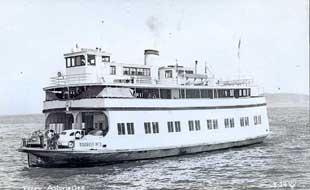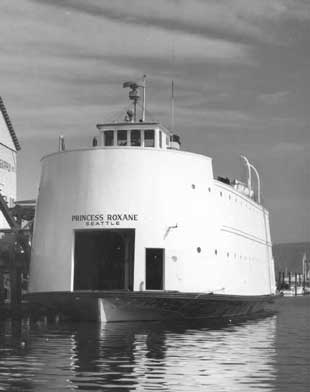

Entering the Seafood Industry by Happenstance
The Wendt family entered the seafood industry by happenstance. In 1929 at the age of 21 Ivar Wendt, pictured to the right, immigrated to the United States through Elis Island. He had the contact information of a man in New York his mother had meet years earlier in Germany and recently written to about Ivar. Ivar went to see him at his office where the first thing he said to him was, "You people think all you have to do is come over here and shovel gold off the streets." He turned around and left never to see him again.
Someone told Ivar about Seattle and the lumbering business, which his father had been involved in. He took a gamble, bought a train ticket and headed out West. Upon arriving in Seattle, he found a boarding house and put down $50 for a month’s rent. He found work at a lumber mill in Ballard, but it only lasted a couple of months. He then washed cars at a dealership. Two weeks later he heard about a job in an import-export firm. He applied for a job and was hired.
One of the business partners in the company he worked for had started an oyster hatchery in South Bend but abruptly quit and left the company. Ivar was sent down to the plant to keep the books. He knew little to nothing about book keeping but the company trusted him. Upon arriving to the plant, he had no knowledge about oysters. Over the next four years he learned every part of the industry: seeding, growing, harvesting and later selling. He spent his summers traveling the United States west of the Mississippi calling on food brokers and wholesale companies.
After being in America for ten years he headed back to Germany. He was shocked to see how Germany had changed under the Nazi regime and told his father he could not be happy in Germany and wanted to return to America.
Ivar returned to the oyster business and shortly after married Mary Jane Cearns. With growing expenses, he asked for a raise. The $20 raise they offered him would have brought his monthly salary to $195. He felt the offer was not enough and decided to go into business on his own.
He came across a vacant cubby hole in a Seattle warehouse where he opened a broker's office. Times were tough, and he wondered if he had bitten off more than he could chew now having four children to provide for. He took a second job on the night shift at a steel rolling mill. He would arrive home around one or two in the morning completely exhausted get a couple hours of sleep and then head to his brokerage office.
He developed the Pacific Pearl Seafoods label and sold oysters, clams, Dungeness crab and other seafood items. He worked with several canneries in Bay Center, South Bend and Westport. He thought it might be a good idea to can shrimp that was caught off the Oregon and Washington coasts. The shrimp was peeled by hand in the cannery. In the South they began using automatic peelers when canning shrimp. In 1946 Ivar purchased an automatic peeler and installed in on the cannery line. He found huge success for about a year until all the other canners purchased automatic peelers for their plants. Between the increase in competition and the expected yields not materializing in nearby waters Ivar decided to look elsewhere.
Alaska has plenty of shrimp, so he closed the Hoquiam plant and move the equipment to Seldovia. He did incredibly well until the 1964 earthquake that destroyed the plant. Ivar purchased a buoy tender, salvaged the equipment from Alaska and turned it into a floating processing plant the Pacific Pearl. The company moored the floating processor in Kodiak. Later he would purchase two discarded Columbia River ferries and convert them into crab canneries that were also moored in Kodiak. One of the ferries was the Tourist No. 3 that was converted into the Princess Roxanne both pictured.
Joe and John, two of Ivar’s son's, followed him into the seafood business first working for him and then going out on their own. Joe took over a fish market on Queen Anne in Seattle adding a fish bar. He then went on to work for a few seafood distributors in sales. John worked for the company that purchased Pacific Pearl Seafoods for a while but then went out on his own first starting a trading company and then formed Seatech.
Todd, Joe's son, helped out at the fish market, did a stint as commercial fisherman in Alaska, worked at a Dungeness crab plant and then went to work for John at Seatech.



